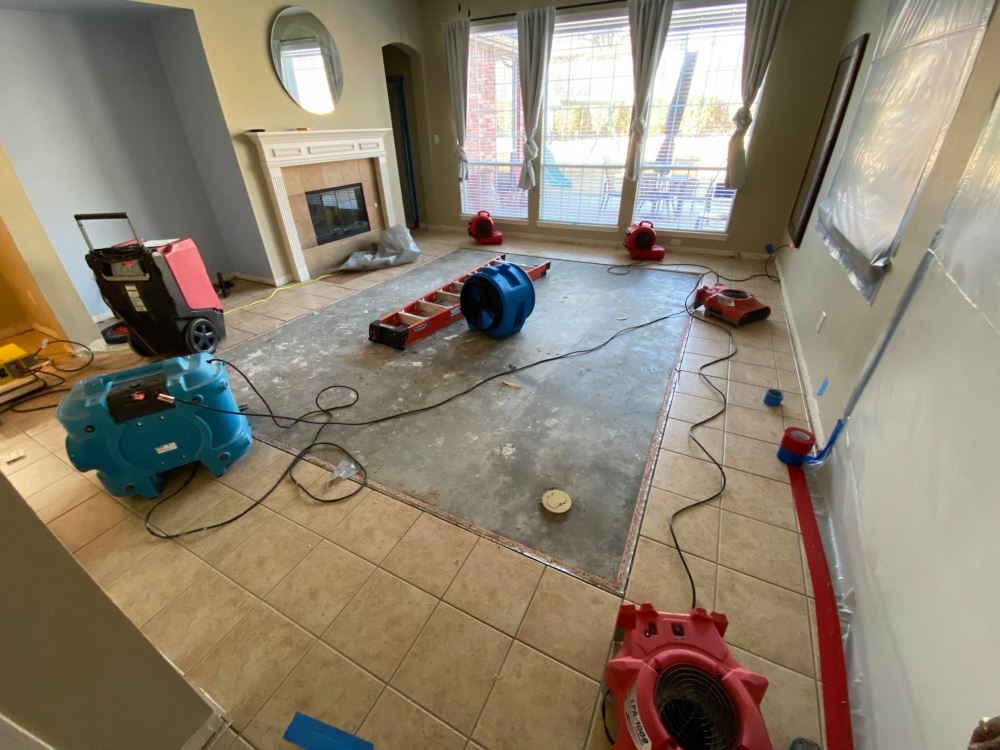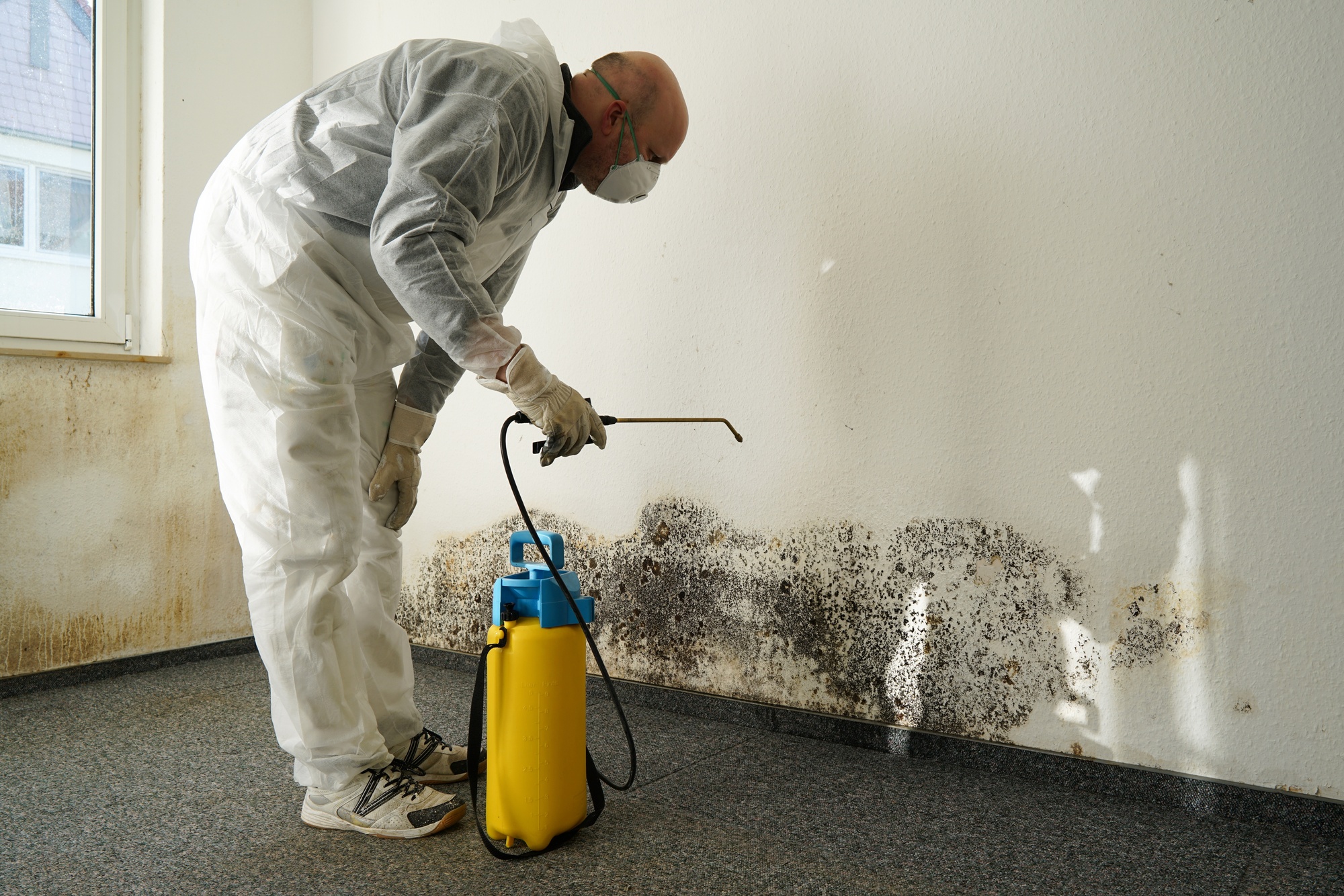What happens when you schedule Flood Cleanup Services
Wiki Article
Water Damage Restoration 101: Comprehending the Process and Price
Water damage can strike unexpectedly, leaving home owners in a state of confusion. Understanding the repair process is important for reliable recovery. From examining the damage to choosing the right service company, each action influences the overall result and cost. Factors such as the kind of water damage and urgency likewise play a considerable role. What are the certain techniques used in remediation, and how can one plan for potential costs?Kinds Of Water Damage
Initial Evaluation and Examination

Water Extraction Strategies
Adhering to the preliminary assessment, reliable water extraction strategies are utilized to reduce damage and prevent additional concerns. These strategies involve the use of specialized tools such as industrial-grade vacuum cleaners and completely submersible pumps - Mold Remediation After Water Damage. The selection of technique relies on the volume of water present and the kind of materials influenced. For standing water, completely submersible pumps are generally made use of for quick removal, while vacuum cleaners are perfect for extracting water from rugs and upholstery. Furthermore, progressed approaches like water removal mats might be utilized for hard-to-reach locations - Flood Cleanup Services. The goal is to eliminate as much water as possible, decreasing the potential for mold and mildew growth and structural damage. Motivate and efficient water removal is essential in the total water damage repair procedureDrying Out and Dehumidification Process
As soon as the water extraction is full, the drying out and dehumidification process ends up being critical to recovering the affected area. This phase commonly employs industrial-grade dehumidifiers and air moving companies to efficiently reduce moisture degrees. The dehumidifiers reel in damp air, getting rid of excess humidity, while air movers distribute air to speed up evaporation. Monitoring devices is frequently used to track humidity and temperature levels, ensuring optimal drying problems. The duration of this process can vary depending on the extent of the water damage and environmental factors. It is important to extensively dry all affected materials, including wall surfaces, flooring, and furnishings, to protect against mold growth and architectural damage. Proper implementation of this action is essential for a successful reconstruction end result.Cleaning Up and Sterilizing Afflicted Locations
When the drying out process is total, a complete first assessment and assessment of impacted locations is crucial to recognize contamination degrees. Effective cleaning techniques and suitable products must then be employed to remove particles and spots. Finally, sanitization and sanitation approaches are vital click resources to assure that damaging pathogens are gotten rid of, restoring the area to a secure conditionInitial Analysis and Inspection
Before starting any type of restoration initiatives, an extensive first evaluation and evaluation of the influenced areas are important for efficient cleaning and sterilizing. This process involves identifying the degree of water damage, establishing the source of the water breach, and assessing the materials impacted. Inspectors commonly seek indications of mold and mildew development, architectural stability problems, and damaged items. The assessment additionally consists of checking wetness levels using specialized devices to guarantee no hidden water pockets continue to be, as these can result in further complications. Recording the findings is essential for planning the following action in the reconstruction procedure. An in-depth preliminary evaluation enables remediation specialists to create a targeted technique for effective cleansing and sterilizing, inevitably reducing damage and health dangers.Cleaning Strategies and Products
Effective cleaning and sterilizing of water-damaged locations call for a range of items and strategies customized to the details materials influenced. For permeable surfaces like drywall and carpeting, removal approaches are vital to eliminate excess moisture, complied with by deep cleaning with specialized cleaning agents. Non-porous materials such as floor tile or metal can be cleansed making use of commercial-grade cleaners that effectively get rid of contaminants. Steam cleansing is one more effective strategy, particularly for carpetings and upholstery, as it utilizes heats to eliminate microorganisms and mold (Water Damage Restoration). Furthermore, environmentally friendly items are increasingly prominent for their safety and security and efficacy - Water Damage Restoration. Inevitably, selecting the suitable cleaning techniques and items not just ensures prompt sanitation but likewise help in avoiding further damage and carcinogen connected with water breachSanitization and Disinfection Methods
When resolving water damage, proper sanitization and disinfection methods are necessary to assure the safety and health of the afflicted environment. After preliminary cleaning, surfaces should be treated with suitable anti-bacterials to remove microorganisms, mold and mildew, and bacteria that flourish in moist problems. Usual approaches consist of the use of EPA-approved chemical anti-bacterials, which can be applied with splashing or cleaning strategies. Furthermore, ultraviolet (UV) light systems can properly sanitize areas by neutralizing microbes without severe chemicals. The option of technique frequently relies on the sort of products impacted and the level of contamination. Eventually, extensive sanitization not only restores a secure living area but likewise helps prevent future health and wellness threats connected with sticking around moisture and mold development.
Repairs and Restoration Options
Examining the damage triggered by water exposure is crucial for identifying the appropriate fixings and repair alternatives. House owners may encounter numerous concerns, including damaged drywall, distorted floor covering, and jeopardized architectural components. Relying on the extent of the damage, repairs may include changing sections of drywall, installing brand-new floor covering, or strengthening structural beams. In situations of severe damage, complete replacement of damaged materials could be essential. In addition, specialist restorers typically recommend using wetness meters to analyze surprise dampness degrees prior to determining on the very best strategy. It is necessary to act immediately to protect against mold and mildew development and additional degeneration. Selecting the right choices not only restores the home however also guarantees lasting security and functionality.Aspects Affecting Restoration Prices

The degree of water damage directly affects the reconstruction costs homeowners can anticipate to incur. Aspects such as the resource of the water, the duration of exposure, and the affected products significantly influence rates. For example, tidy water damage from a damaged pipe is generally much less expensive to bring back contrasted to damage brought on by sewer. In addition, the degree of contamination dictates the demand for specialized cleaning and disposal services, better enhancing costs. Geographical location likewise contributes, as local labor rates and accessibility of restoration solutions can vary. The necessity of the feedback affects costs; quicker interventions normally lead to decrease total expenditures by protecting against further damage. Comprehending these aspects is essential for homeowners when estimating restoration costs.
The 3 main kinds of water damage are classified based on contamination levels: tidy water, gray water, and black water. A detailed first assessment and examination are crucial actions in the water damage remediation process. For standing water, submersible pumps are typically utilized for quick elimination, while vacuum cleaners are excellent for extracting water from carpetings and upholstery. The extent of water damage straight impacts the reconstruction sets you back property owners can expect to sustain. Tidy water damage from a damaged pipe is generally less pricey to bring back compared to damage created by sewer.
Report this wiki page